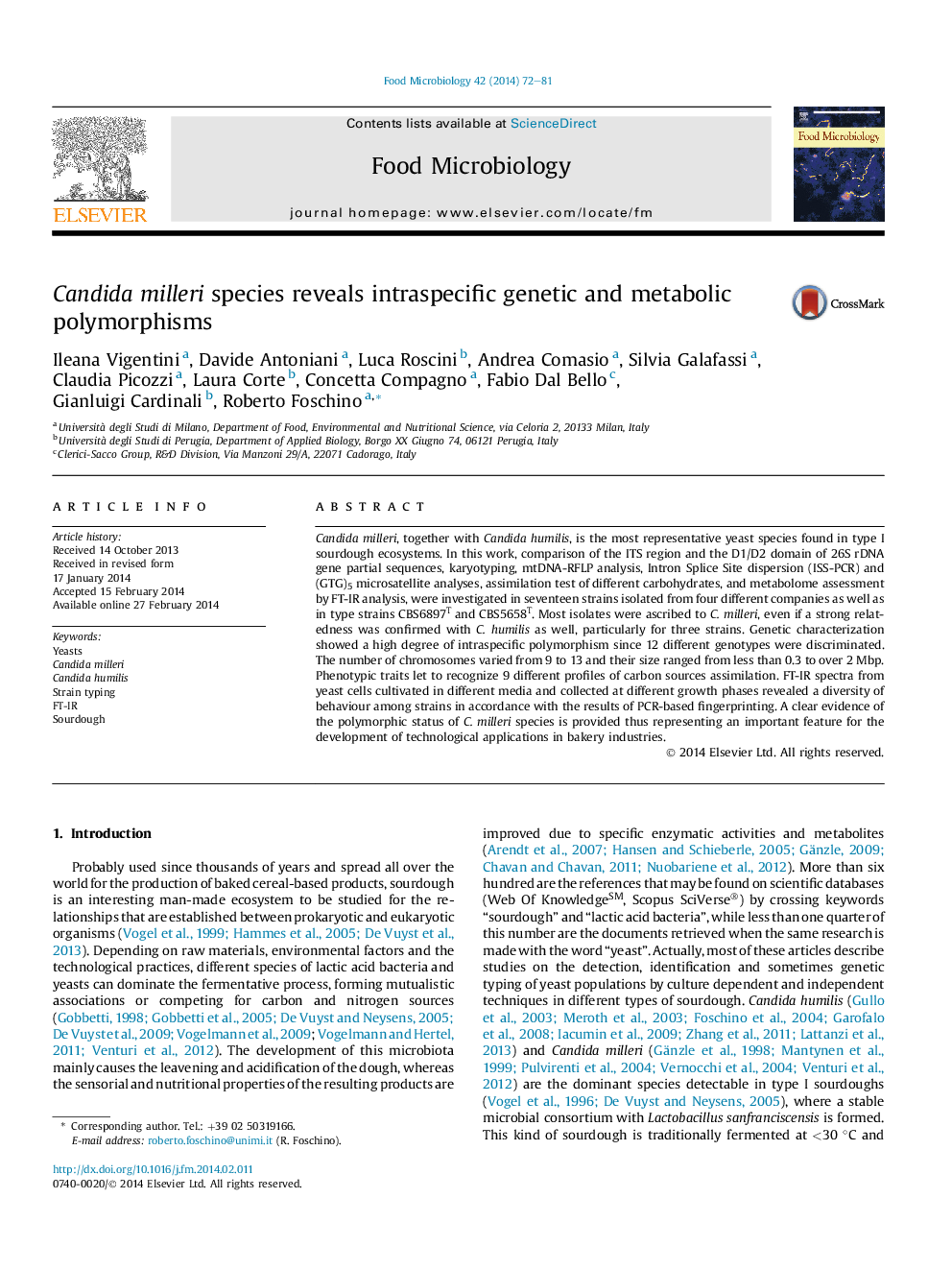| Article ID | Journal | Published Year | Pages | File Type |
|---|---|---|---|---|
| 4362884 | Food Microbiology | 2014 | 10 Pages |
•Candida milleri and Candida humilis are correctly identified only by ITS region sequencing.•Genetic and phenotypic typing reveal a high polymorphism within the C. milleri.•CBS5658T and CBS6897T strains show distinctive traits in glucose metabolism.•Results of FT-IR analysis are in accordance with PCR-based fingerprinting.
Candida milleri, together with Candida humilis, is the most representative yeast species found in type I sourdough ecosystems. In this work, comparison of the ITS region and the D1/D2 domain of 26S rDNA gene partial sequences, karyotyping, mtDNA-RFLP analysis, Intron Splice Site dispersion (ISS-PCR) and (GTG)5 microsatellite analyses, assimilation test of different carbohydrates, and metabolome assessment by FT-IR analysis, were investigated in seventeen strains isolated from four different companies as well as in type strains CBS6897T and CBS5658T. Most isolates were ascribed to C. milleri, even if a strong relatedness was confirmed with C. humilis as well, particularly for three strains. Genetic characterization showed a high degree of intraspecific polymorphism since 12 different genotypes were discriminated. The number of chromosomes varied from 9 to 13 and their size ranged from less than 0.3 to over 2 Mbp. Phenotypic traits let to recognize 9 different profiles of carbon sources assimilation. FT-IR spectra from yeast cells cultivated in different media and collected at different growth phases revealed a diversity of behaviour among strains in accordance with the results of PCR-based fingerprinting. A clear evidence of the polymorphic status of C. milleri species is provided thus representing an important feature for the development of technological applications in bakery industries.
